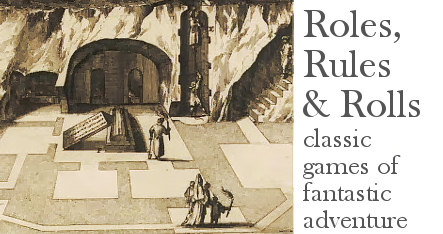When I say D&D is fundamentally uncool, what do I mean anyway? The word "cool" has shifted around so much that it's hard to know. It needs explanation.
A key text here is Robert Farris Thompson's article An Aesthetic of the Cool, from 1973, the journal
African Arts. What is cool to the Gola of Liberia? Thompson quotes Warren D'Azevedo:
Ability to be nonchalant at the right moment ... to reveal no emotion in situations where emotion and sentimentality are acceptable - in other words, to act as if one's mind were in another world.

You may protest that transportation through fiction, fandom or gaming is just that, putting one's mind in another world, but this misses the point. Cool implies that the other world is a calmer, less emotional place. To travel to another world in order to excite the passions is the opposite of cool. "Coolness" by Thompson's definition is a poised posture, a place without conflict. By removing expression outward, you remove the possibility of interruption or ridicule inward.
Other writers on the aesthetics of cool among African Americans and its general percolation out to the world culture - such Mintz, Billson, and Pountain & Robins - have remarked on its potential as resistance. For Black men in America, cool has been a way to negate the clownish features laid on them by racist iconography, to mentally check out from an environment unresponsive to their dignity and needs. The appropriation of cool, in the service of musical and other aesthetic trends, is laid forth in
Pountain & Robins' 2000 book, auguring in the hipster era. Ultimately for them, cool is a "permanent state of private rebellion," a state that vanishes once it calls attention to its own coolness.
This reminds us that D&D is "uncool" in a more superficial sense, that of the well-known American high school hierarchy with its "cool kids" and "uncool kids." But in any high school there are two kinds of cool kids. You have the popular kids who show their passions for socially approved costumes, games, and fields of expertise like cheerleading, school spirit and sports. Another kind, though, set their sights outside the high school walls. They are cool toward school but this form of resistance masks their passions, aimed elsewhere: alternative cinema, drama, music, art. In high school and college I played RPGs almost as much with a set of punk rockers as with the more overtly enthusiastic nerd crew. They were socially uncool and yet - in the anthropological sense - truly cool.
In McLuhan's well-known distinction, roleplaying is one of the hottest of media, requiring hard mental and imaginative work to achieve the immersion that is its goal. Contrast this to "cool" media like television which ask for only open eyes. People who grow self-conscious or dissatisfied about roleplaying's hotness reach for the bottle of cool to cut it down.
By a nice coincidence, I recently returned to the RPG Site forum after some days absence to find an argument brewing, relevant to all these points. The initiating question was whether anyone enjoys
playing RPGs in costume. As I pointed out last post, this activity is the quintessence of the FUDD (Fundamental Uncoolness of D&D) and so not surprisingly sparked off heated protestations. Many posters spoke of their desire not to look like even more a geek than they already were, under the watchful eyes of sarcastic co-workers or Bible Belt society.
But in an age of ubiquitous popularity of the Lord of the Rings films or Game of Thrones show, the uncool thing is not liking fantasy, but liking it in ... that way. That hot, immersive way that puts you at risk of disappearing entirely into the fantasy world, of regressing into childhood. That play-acting, masquerading, feasting and wassailing that Puritans have always sought to ban, that sensible people indulge in only at certain times of the year and in certain cities of the nation.
Bad enough you read the books instead of consuming media (getting hotter ... look what happened to poor Quijote). Bad enough you play a game where you take the role of a character (getting hotter ... look what happened to poor Black Leaf). But to run around wearing the costumes? To unselfconsciously declaim in a funny accent, your lineage as a noble dwarf? You're hot as hell and most people can't take the heat. They have to turn up the cool - in one of several ways.
Next: "We're Normal, Honest!"


























